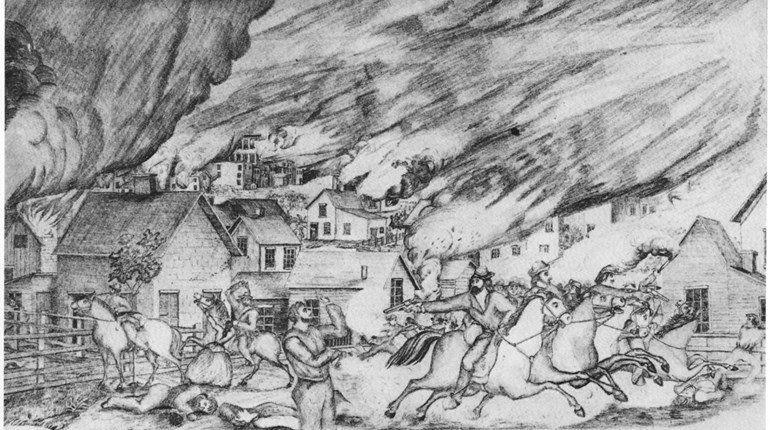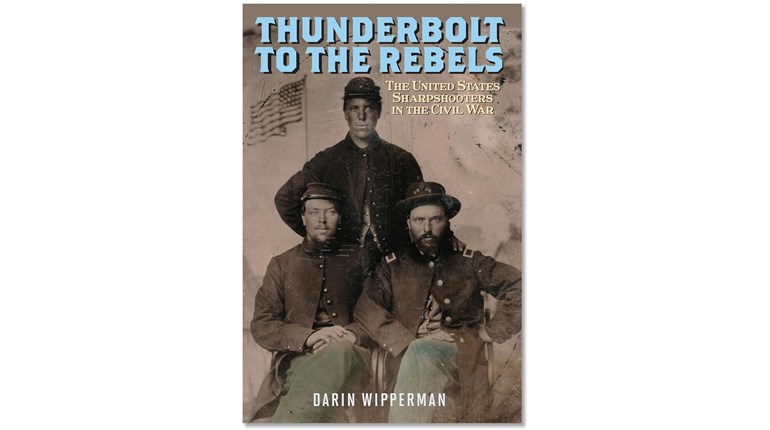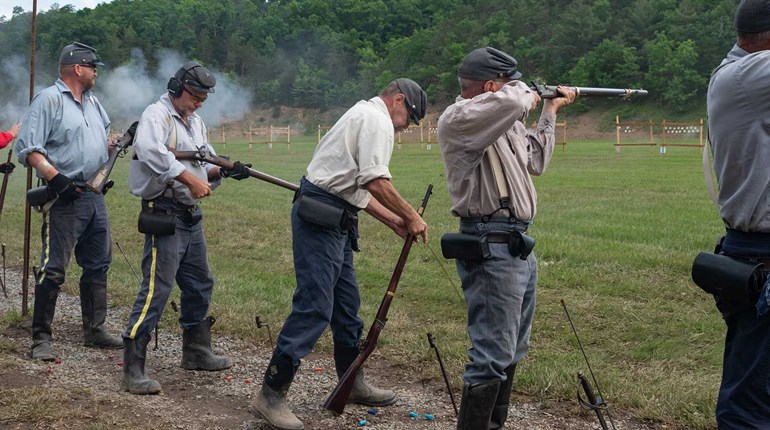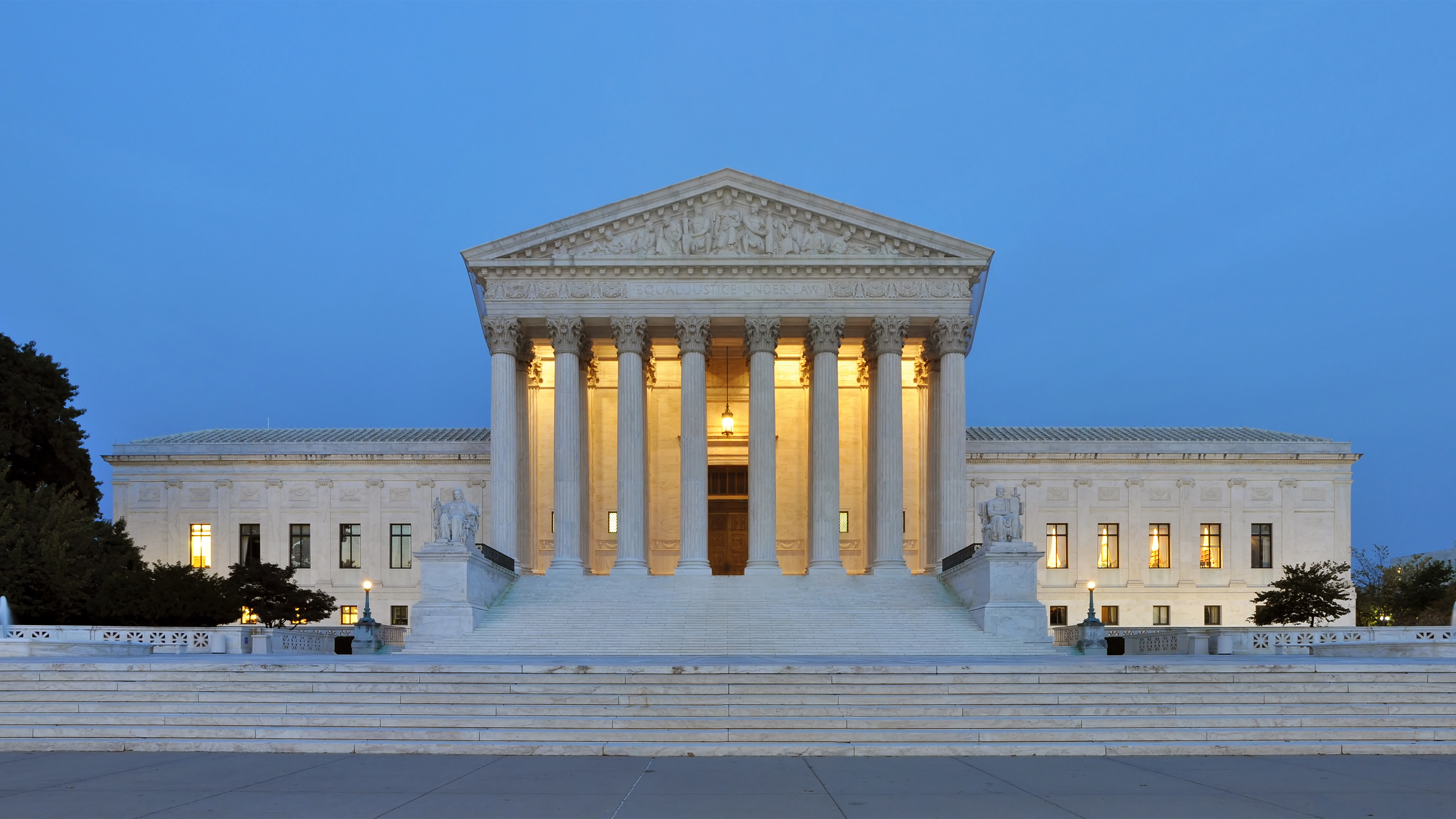
Antietam Creek wanders down into western Maryland from Pennsylvania, for much of its length little more than a wade-across affair. It seems unlikely to have changed much since 1862, but on that Sept. 17, the inauspicious tributary to the Potomac flooded the awareness of a riven nation, writing itself into the annals of U.S. military history—the bloodiest day, ever.

The context of Antietam was as important as the clash itself. Confederate President Jefferson Davis wanted a victory on inarguably Northern soil to persuade Britain and France to recognize the South as a separate, even viable nation. Fresh from victory at the Second Battle of Bull Run (Aug. 28-30), General Robert E. Lee believed just such a tidal victory was possible by attacking the Union railroad nexus at Harrisburg, Pa.
Union Major General John Pope retreated toward Washington after a pounding at the Second Battle of Bull Run, but awaiting him was Major General George McClellan, architect of the Army of the Potomac. 70,000 strong, McClellan used the chance discovery of Lee’s plans to pursue the general north and west, where Lee elected to stand his ground at Sharpsburg, Md. With only a single exit available to him, his 30,000 soldiers under T.J. “Stonewall” Jackson and James Longstreet dug into the rolling terrain west of Antietam Creek and east of the Potomac.
In many ways, the battle itself proceeded from error to communications failure to squandered opportunity and back again. The seesaw tone that was to describe the day began early with Brigadier General George Mead’s advance on Lee’s left. A small initial success was soon tempered, then halted, by withering artillery and rifle fire, which was just as ferociously returned. Shortly after 6 a.m., casualties well over 60 percent in some units caused firing to simply cease on both sides.
Throughout the day, General McClellan would blunder. He issued conflicting commands (later recounting himself more than one battle plan for the 17th), and never exploited the clear advantage of his numbers in hesitant, piecemeal attacks. He believed General Lee had 120,000 troops—well more than twice what the Army of Northern Virginia could actually field. As a result, he never committed his 15,000 to 20,000 reserves to any part of the battle.
In his own turn, there is some question as to whether Lee should have offered battle at all. His markedly smaller force and a single, precarious line of retreat were, at the least, over-confident. In many ways, the battle itself proceeded from error to communications failure to squandered opportunity and back again.
The butcher’s bill was terrible. The staunch (and essentially successful) Confederate defense of Sharpsburg resulted in 10,318 casualties: 1,546 dead, 7,752 wounded and 1,108 missing—31 percent by the calculations of historian Stephen Sears. Attacking Union forces suffered 12,401 casualties, including 2,108 dead, 9,540 wounded and 753 missing, or 25 percent. The intensity of the fighting knew no bounds that Wednesday. In addition to regular troops, both sides lost three general officers in the course of the battle.
On the morning of Sept. 18, Lee’s beleaguered forces were marshaled for a renewed McClellan onslaught, but it never came. Indeed, Lee would slip across the Potomac effectively un-harassed, despite the urging of no lesser observer than President Abraham Lincoln. While McClellan was hailed as a notable (if quietly disputed) tactical victor, he found himself relieved of command little more than six weeks later.
The strategic consequences of Antietam were profoundly different, however. The Confederacy failed to secure crucial foreign assistance for the war effort, and paid dearly in terms of able troops it could ill-afford to lose. The North’s bitter price turned back Lee’s military spearhead, but the political ramifications were far more positive. However narrow the victory, it emboldened President Lincoln to make a preliminary Emancipation Proclamation. Many Northerners saw this as a necessary olive branch whether Southern states accepted it or not, and the resulting political capital made Lincoln’s off-year election losses the smallest in more than 20 years.
The Army of the Potomac and the Army of Northern Virginia would trade tactical victories in the months following Antietam, though in strategic terms the Confederacy never recovered.
In another of history’s inscrutable twists, the clear turning point was yet to come. Even more protracted and costly, the place would be a scarce dozen miles from the headwaters of Antietam Creek, the date would be July 1-3, 1863, and the name, Gettysburg.


































